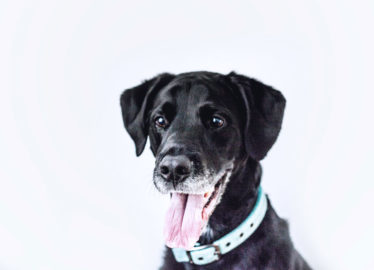Top Tips on Choosing the Right Home for You and Your Dog
- December 22, 2017
- Murphy Team Voice
- Comments are off
If you have a dog, you don’t need a lecture on the joys of dog ownership. You already know them. You also know that they have definite personalities and don’t always adjust quickly to major changes. When the time comes for you to move into a new house, your dog will need some special attention to ensure he doesn’t ravage your new digs or run away. Read on to learn how to make this transition smoother for both of you.
Keep Your Dog in Mind as You Purchase
If you’re house hunting with your dog’s happiness in mind, you’re not alone. Dog ownership is the main reason more millennials are moving out of apartments and into starter homes. Dogs rate higher on the list of reasons to own a home than children.
While it’s not impossible to keep a happy dog in a condominium, a single-family home with a yard will provide more opportunities for your pet to express his nature. Fenced yards are a blessing when your dog needs to take care of business, and yards allow more opportunity for playing catch and tug without risk of broken furniture.
Choose The Right Neighborhood
Seriously consider buying in a neighborhood where other dog owners live. Dog owners are more tolerant of barking, and they tend to look out for each other. A dog-loving neighbor is much more likely to help you look for Fido if he jumps your fence and goes missing.
Be very careful, even wary, about buying in covenant-protected residential communities. Read the bylaws carefully to discover if there are any anti-dog codes that will affect Fido.
If you’re moving to a different region or state, you’ll need to know what, if any, specific breed laws pertain to your pet. For instance, if you and your pitbull are relocating to Denver for a job, you will need to move to the nearby city of Centennial, Colorado where pitbulls are allowed, NOT to the city of Denver where they are banned.
Moving day
Despite your best intentions, your dog will suffer some anxiety about the move. You can mitigate that fear by:
- Remaining to calm yourself. Dogs mirror their owner’s emotions with uncanny empathy, so focus on breathing deeply and keeping your train of thought positive. This will assure your dog that there’s nothing to stress out about.
- Plan how to keep your dog from running away. Far too many people lose their animals during the process of moving from one residence to another. The door is open while furniture is being loaded on a truck, your dog is scared and his best idea is to run out the door; you may never see him again. Don’t let this happen to you. Either crate your dog during loading and unloading, board him or have him stay with a trusted friend.
After the move
Once you’re settled into your new place, your dog is likely to exhibit one or more stress behaviors which may include:
- Excessive chewing of woodwork and furniture
- Excessive whining or barking
- Peeing or defecating indoors even though he is trained not to
You can minimize and eliminate these behaviors by patiently keeping your dog’s rituals as consistent as possible. Walk him at the same time of day as usual. Let him have access to his favorite toys, or offer him the treat of a new toy. If at all possible, spend more time with him the first two weeks after the move and be extra affectionate.
Your dog loves you. And that love is hardwired into him. When you move, keep your dog safe and make sure he knows you love him back. In a few weeks, he’ll be the same, happy pooch he’s always been, and you’ll both be enjoying your new, bigger home.
written by Cindy Aldridge
